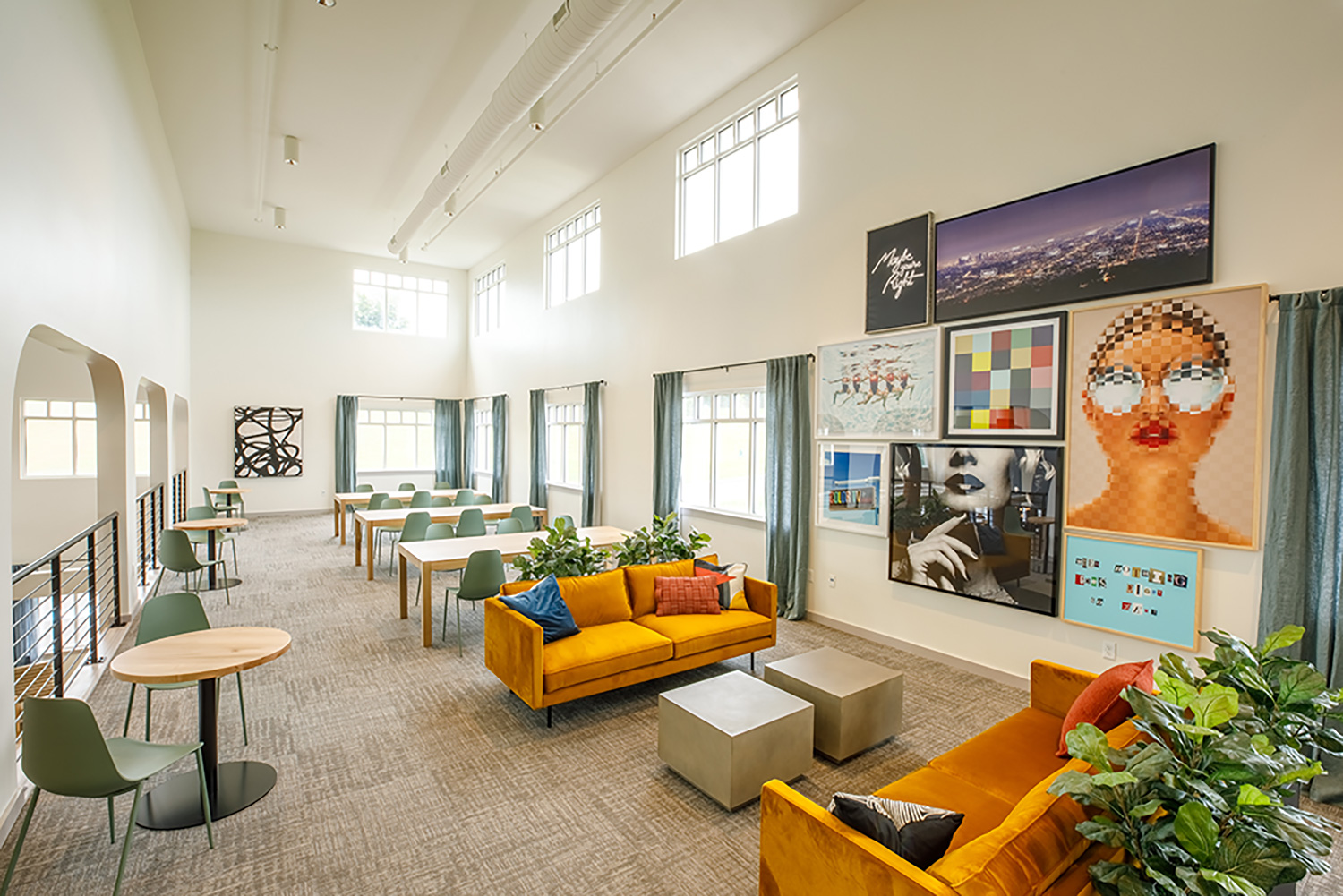Make your residents feel right at home
The Importance of a Welcoming Atmosphere
In this blog, we’ll cover the importance of:
Tip 1: Choose Warm and Inviting Colors
Color psychology is well-documented. It’s a powerful design tool, helping evoke emotions, influence moods, and create specific vibes that completely transform a space. Warm color palettes support a welcoming environment, softening a room to make residents feel at home.
Warm colors include:
- Red
- Orange
- Yellow
- Gold
- Brown
- Amber
- Sienna
By using warm colors, you add comfort to the space and help spark connections between residents by creating an environment in which they feel at ease.
Tip 2: Incorporate Comfortable and Functional Furniture
Good furniture encourages residents to sit and stay awhile. It shows the space is meant for socialization, studying, or other activities. When guests are greeted by plush couches, ergonomic chairs, and ample seating and workspaces, they feel like the space is made for them.
Another option is to include a variety of furniture and seating, such as tables, chairs, booths, sofas, and even hammocks or swings. This gives your guests variety to enjoy the space however they please.

Tip 3: Add Personal Touches and Décor
Lamps, artwork, sculptures, and other custom details make your space look more put together. These add intention to your design, especially if you’re using items that are of significance to the local community (think local team pennants, maps, photos of nearby landmarks, etc.).
Adding personal items can also tie your brand to the community. Your housing will fit into the local community aesthetic and culture. Working with an experienced design team like SouthPark Interiors helps you create a unique and highly personalized design that will be well-received by your residents.
Tip 4: Maximize Natural Light and Greenery
Adding natural light to a community is a great way to infuse health and wellness into your design. This helps bridge the gap between indoors and outdoors and allows residents to stay connected with nature.
Greenery maximizes the effects of natural light by creating a more nature-focused living space. Incorporating nature indoors has been shown to improve mood, reduce stress, and foster productivity. It’s incredible what a few potted plants and trees, flowers, hanging planters, or living walls can do to brighten up your design.
Tip 5: Ensure Functional and Cohesive Layouts
The way furniture, decor, and other elements are arranged impacts a room’s overall vibe. A well-thought-out layout can make residents feel comfortable and at ease, and work more efficiently for on site staff. On the flip side, a jumbled or cluttered space can make them feel stressed and cramped.
Some tips that may help in optimizing your living spaces include:
- Create separate quiet areas and activity spaces
- Include plenty of power outlets and designated charging stations
- Don’t overcrowd the space with non-functional furniture
- Use different heights, sizes, and colors to create a visual interest
- Maintain consistent spacing between elements
- Think about the user experience to create an intuitive and efficient layout
Every space is unique and requires special attention to detail when creating functional and cohesive layouts. The role of a professional designer cannot be overstated in this step.
Let SouthPark Interiors Design a Welcoming Ambiance for Your Residents
Creating a welcoming environment is a combined effort of color, furniture, personal touches, natural elements, and layout. Working with a commercial interior design firm experienced in multifamily and student communities gives you a shortcut to putting these design tips to work. Reach out to SouthPark Interiors to discuss your upcoming housing projects.
